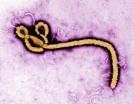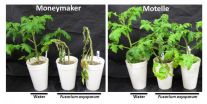With the current situation of the Ebola epidemic, it quickly became necessary for French research to be mobilised rapidly.
In August 2014, the French Minister of Health and Secretary of State for Higher Education and Research made Aviesan responsible for preparing and organising the response of French research to infectious emergencies.
With extensive past experience and recognised for coordinating research during the H1N1 epidemic in 2009 and more recently in response to the emergence of the Chikungunya virus in the Caribbean in 2013, the Aviesan Institute of Microbiology and Infectious Disease benefitted from the expertise of the REACTing network to launch the Ebola research programme.
This network relies on existing teams, research centres and platforms in France and southern countries.
The implementation of these projects is coordinated mainly by teams from Inserm, CEA, the Pasteur Institute, IRD, Universities, not forgetting a close partnership with teams in Guinea, Ivory Coast and Senegal. The network of ANRS sites and researchers in West Africa have also been mobilised. Contents
What is Ebola virus? Time Line: French research mobilised Research programmes coordinated by Aviesan Standardisation of rapid, differential diagnostic tests (Ebola, other diagnoses) Development of a rapid diagnostic test (non-differential) Implementation of a phase 2 clinical trial in Guinea Identification of drugs in a therapeutic indication against Ebola Implementation of a follow-up cohort for convalescent patients to examine genetic and immunological survival factors Analysis of socio-anthropological impact of the disease: sociocultural and historical background Rumours, discussions and controversies: outlooks from the online world An example of a research support organisation: the Jean Mérieux - Inserm P4 laboratory The REACTing network What is Ebola virus?
Ebola virus is a highly contagious, fatal virus. After 2 to 21 days incubation, the disease appears as symptoms not specific to this disease (fever, tiredness, muscle and joint pain) before developing into a phase characterised by gastro-intestinal signs (bloody diarrhoea and vomiting), respiratory signs and sometimes neurological symptoms. In 40% to 80% of cases, the development is fatal.
The current epidemic in West Africa, the largest ever, continues to gain ground, even if applying a certain number of recommendations should bring it under reasonable control in a few weeks. Spreading of the virus between humans is associated with a multitude of parameters, both sanitary (difficulties with biological diagnosis on site, overwhelmed healthcare systems in countries, some of which are emerging from a long period of civil war, humanitarian organisations overwhelmed by the scale of the epidemic) and socio-cultural (funereal rites, cultural divide between populations and healthcare teams, lack of trust in the national authorities and international agencies). In addition, modes means of transport can promote and accelerate spread of the virus outside the initially contaminated area, as we have seen in Nigeria, Senegal and more recently the United States. In summary, more than 6 months after its diagnosis, West Africa is facing a major 'out of control' epidemic. Northern countries (Europe, United States) may have a small number of cases, but the risk of a generalised epidemic is very low.
Time Line: French research mobilised
In March 2014, Guinea notified its first cases of Ebola virus illnesses to the World Health Organisation (WHO). Then the epidemic took hold in Liberia, Sierra Leone and Nigeria. Isolated cases have also been diagnosed in Senegal, Europe and the United States.
In April, the strain that has wrought havoc for several months was characterised in France. Researchers at Inserm (the P4 Laboratory in Lyon) and the Pasteur Institute (national reference centre for viral haemorrhagic fevers), working jointly with European partners, revealed in an article published in The New England Journal of Medicine that it was the Zaire strain of the Ebola virus in Guinea. A retrospective clinical and epidemiological analysis suggests that the epidemic could have started in December 2013. It appeared that the epidemic started from a single 'index' case (the source of the epidemic). Bats appear to be the most likely reservoir. Current status and priorities for research on the Ebola virus
Four scientific crisis meetings, organised as part of REACTing (see page 11) on 17 July, 19 August, 2 and 26 September 2014, established the current status of French research efforts on Ebola, identified priorities and launched multi-disciplinary and inter-organisational research programmes.
In the short term, research on Ebola virus should put a priority on improving therapeutic treatments for the sick, whether by using treatments to limit replication of the virus or to boost protection of the host. This is a major need because, apart from symptomatic treatment (to relieve the pain but not treat its cause), there is currently no effective treatment and no molecule has been tested in an epidemic situation. The challenge is therefore to develop antivirals against Ebola.
In the medium term, research covering more fundamental aspects will also be developed (vaccine, immune response, new therapeutic targets, etc.).
Several research directions identified
There are several experimental vaccines and treatments against Ebola that have given promising results in primates. Several candidate drugs have shown some efficacy when administered very soon after infection, but none when given more than 2 days after infection. It is this early phase that researchers at members of Aviesan wish to exploit.
In parallel, the Ebola fever epidemic in West Africa requires making diagnoses locally with techniques usable in the field. Everything remains to be done on this aspect.
Finally, human and social sciences research should be given very special attention. Several projects will be started by Aviesan in these areas.
Research programmes coordinated by Aviesan Standardisation of rapid, differential diagnostic tests (Ebola, other diagnoses) The Ebola fever epidemic in West Africa requires making diagnoses locally. The current situation is therefore paradoxical, with excellent diagnostic techniques in national reference centres but a lack of standardisation for techniques usable in the field. Objective: To develop a lyophilised, ready-to-use diagnostic kit that will distinguish Ebola infection from other endemic haemorrhagic diseases in the countries affected. Therefore researchers want to re-examine real-time diagnostic techniques and offer one or more techniques meeting the following specification:
an widely accessible test, with excellent reproducibility/sensitivity/specificity a test enabling diagnosis of all filovirus (usable for the current epidemic and future epidemics) a standard operating protocol, enabling differential diagnoses to be carried out simultaneously.
Results/Due dates: November 2014 - May 2015 Teams mobilised: Xavier de Lamballerie, Sylvain Baize, Eric Leroy
Development of a rapid diagnostic test (non-differential) Objective: With an identical format to tests for pregnancy, the device will be usable in the field, without special equipment, using a drop of blood, plasma or urine. Low cost, it can give a response in 10 minutes for any patient showing symptoms of this disease. This development, completed in a very short deadline, is the result of research conducted by CEA in association with the Ministry of Defence and the General Secretariat for Defence and National Security (SGDSN), in the context of preparation against a bioterrorist act (NRBCE R&D interministerial programme). In this context, monoclonal antibodies specific to the Ebola virus (Zaire) have been developed to react with the current epidemic strain. These antibodies have been used to complete the development of this diagnostic test urgently. Results/Due dates: This test has just been validated technically at the Jean Mérieux-Inserm P4 Laboratory in Lyon on the strain that is currently wreaking havoc in West Africa. The industrial scale up phase will begin with the participation of a French SME. Teams mobilised: Laurent Bellanger
Pre-clinical therapeutic efficacy tests in Ebola infections All therapeutic treatments go through an animal research phase before being validated in man by means of clinical trials. Nonetheless, set against a health emergency, the researchers wanted to go straight to primates because it seemed that this species group was most appropriate. Objective: To demonstrate the therapeutic efficacy of various antiviral molecules during Ebola infections by using animal models. Three types of potential antivirals will be tested: favipiravir, lavimudine and antibodies (serum from convalescent patients, cocktail of monoclonals). All the experiments will monitor: survival rate, body temperature, weight, viral load (quantity of virus per millilitre of blood), and haematological and biochemical parameters. Results/Due dates: Favipiravir test: 20 weeks; Lavimudine test: 4 weeks; Antibody test: 5 weeks for each preparation Teams mobilised: Hervé Raoul, Xavier de Lamballerie & Stephan Gunther
Implementation of a phase 2 clinical trial in Guinea The current death rate from Ebola virus is still over 40%. Drugs with specific activity against the virus are required. Favipiravir, approved in Japan for treating severe flu, has shown efficacy against the Ebola virus in a mouse model is in included in the WHO list of molecules to be tested. Objective: To assess the impact of this treatment in reducing the death rate and lowering the blood viral load in adults in the very early stages of the disease. Treatment will include standard care and oral administration of favipiravir (at the highest dose evaluated in man). Results/Due dates: Cli9nical trials should last 9 months but preliminary results are expected before the end of the year. Teams mobilised: Sakoba Keita (Guinea) & Denis Malvy
Identification of drugs in a therapeutic indication against Ebola Objective: Vincent Lotteau's team and the company Enyo Pharma are currently working on the identification of drugs that already have marketing authorisation and could be repositioned for therapeutic indications against Ebola. Once these molecules have been identified, they will be tested in vitro and in vivo at the P4 Inserm-Jean Mérieux laboratory. This original programme is aimed at acting on proteins in the host organism to prevent viral proteins attaching to them and replicating, rather than acting on the virus itself. The first results have identified 54 molecules of interest (including anticancer agents, molecules that target apoptosis and ionic pumps). 33 of them already have marketing authorisation (MA) for another indication and, if tests are conclusive, it would be a case of therapeutic repositioning. The other 21 molecules are still in experimental/pre-clinical phases. Results/Due dates: October - December 2014 Teams mobilised: Vincent Lotteau
Implementation of a follow-up cohort for convalescent patients to examine genetic and immunological survival factors Objective: To evaluate clinical, virological, immunological and psychosocial development of people infected by the Ebola virus and declared cured. It also involves studying the feasibility and acceptability within this population of taking blood samples for therapeutic use. From a clinical point of view, the occurrence of any consequences and the impact of co-infections will be monitored. In virology, the kinetics of the Ebola virus in body fluids (blood, urine, stools, even genital secretions) will be studied. In immunology, researchers want to evaluate the kinetics of the IgG and IgM humoral response and the neutralising antibody response, as well as cellular immunity. Finally, the psychosocial impact of the real-life experience of the disease and getting better will be evaluated. The study will be set up to recruit in rural and urban areas. Patients will be identified as they leave treatment centres in Guinea or during follow-up implemented at Boende (Congo) after informed consent and repeated home examinations. Results/Due dates: Patients will be followed up for one year (making an 18-month project). Teams mobilised: Eric Delaporte, Mohamed Cissé, Alpha Keita (Guinea) & Steve Ahuka-Mundeke (Republic of Congo)
Analysis of socio-anthropological impact of the disease: sociocultural and historical background Objective: To use social sciences to accompany emergency measures aimed at treating Ebola and preventing its spread. Researchers want to: Gain a better understanding of the background to the epidemic and factors promoting its appearance and dissemination. Develop procedures that are socially and culturally acceptable to the populations. Identify obstacles to safe and effective care in biomedical centres and the African community Mobilise survivors and increase their sense of responsibility Benefit from reviews conducted to improve long-term treatment of this type of health emergency.
Results/Due dates: 5 years Teams mobilised: Vinhkim Nguyen
Rumours, discussions and controversies: outlooks from the online world Objective: The study covers processes for circulating and transforming information about the Ebola epidemic issued by health and humanitarian authorities (government and NGO, local and international) in two categories of countries: African countries affected by the epidemic and three northern countries (France, USA and Canada). What are the various representations circulating about the Ebola virus (popular representations, rumours, polemics and controversies)? What is the relationship between announcements broadcast through the conventional media and chatter spread by social media? Is it possible to categorise users of social media? Which factors influence the credibility of voices and controversial messages? Which factors increase or decrease online acceptance of messages and public health announcements? Just a few of the questions that will be tackled by the study. Results/Due dates: The duration of the epidemic, with a start date for gathering online data set retrospectively to January 2014. Teams mobilised: Laëtitia Atlani-Duault
An example of a research support organisation: the Jean Mérieux - Inserm P4 laboratory The Jean Mérieux-Inserm P4 laboratory is a high-level containment laboratory dedicated to the study of Class 4 pathogens. The biological safety level applied is 4, the highest possible level. This is the only place in France where scientists are permitted to handle samples containing the Ebola virus.
Mérieux-Inserm P4 laboratory ©Inserm/François Guénet All class 4 pathogens currently known are viruses, and include viruses that cause haemorrhagic fevers or encephalitis. They include the Ebola, Marburg, Lassa, Junin, Machupo, Guanarito, Sabia, Crimean-Congo, Nipah and Hendra viruses. The Jean-Mérieux P4 laboratory is the French partner of the European 'EMP4' project, coordinated by German researchers. As part of this project, a mobile P4 laboratory was deployed in Guinea to provide field assistance diagnosing Ebola cases. Six specialists in dangerous infectious diseases from the European Mobile Laboratory (EMLab) project arrived in Guéckédou last April and were relieved by seven new experts at the end of July. The mobile laboratory unit set up on site provides easily-transported equipment to enable the virus to be handled safely enclosed in boxes. This considerably improves the quantity of samples available for analysis and makes it easier to confirm cases of Ebola, so contributing to reducing the number of undiagnosed cases and preventing the spread of the disease.
The REACTing network
Main objectives:
to improve the preparation of research in inter-crisis periods: governance, preparation of research facilities, identification of research priorities, seek finance, ethical and legal aspects; to finance and implement research projects in epidemic crisis periods: coordination, strategic priorities, methodological guidance, notification of the authorities and general public. This network relies on existing teams, research centres and platforms in northern and southern countries. It is organised around a steering committee of some fifteen specialists in human health and animal health, on topics ranging from fundamental to clinical, and will report to an international scientific committee. Two methodology centres have been established, one for northern aspects (F. Mentré, Bichat university hospital) and the other for southern aspects (A. Fontanet, Pasteur Institute). REACTing does not target any particular disease and may intervene in all infectious, particularly zoonotic, emergencies. Its scope of action is broad, from fundamental research to human and social sciences, promoting a cross-disciplinary approach. At the beginning of 2014, REACTing was mobilised against the Chikungunya epidemic in the Antilles and demonstrated that coordinated mobilisation between partners allowed a rapid and effective response by French research. So 11 projects were able to be implemented in less than six months, with finance from multiple organisations, the French General Health Directorate (DGS) and the French Healthcare Providers' Directorate (DGOS).
INFORMATION:
Coordination of the programme:
Bernadette Murgue, Deputy Director of the 'Microbiology and infectious diseases' themed institute
Yazdan Yazdanpanah, Department of Infectious and Tropical Diseases - Bichat Hospital - Infectious Diseases Centre
To find out more
Coordination of the Ebola research programme: IMMI/Aviesan
Jean François Delfraissy
Aviesan
Director of the de 'Microbiology and infectious diseases' themed institute
Bernadette Murgue, Yazdan Yazdanpanah
Press contact: presse@aviesan.fr
http://presse-inserm.fr/en/ebola-virus-update-on-research-in-france/16440/



